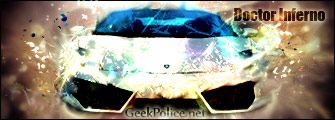You haven’t specified which motherboard is actually inside your machine so I’ll use this as an opportunity to look at a few possible reasons motherboards can refuse to play ball with your Windows XP operating system. I can also look at some of the problem areas concerning motherboards, and discuss what you should look out for when upgrading your computer.
Incorrect drivers are the main cause of motherboard instabilities. At a guess, your installation is using the default Windows XP motherboard drivers, rather than the drivers that came with the motherboard. While these work fine with the majority of motherboards, it’s usually worthwhile tracking down the proper motherboard drivers to see if these make a substantial difference.
To download the latest drivers, you need to know the make and model of the motherboard inside your machine. If you’re lucky you may still have the original manual lying around. Otherwise, a little investigation is needed. The easiest way to get this information is to physically open the machine and look for a model code printed on the motherboard itself.
Finding the right drivers is then a case of typing the make and model number into your favourite search engine. Alternatively, go to
www.motherboards.org and follow the appropriate links. If you can’t find any distinguishing marks on the motherboard, try using a program such as Sisoft Sandra
www.sisoftware.co.uk to see if it can recognise your motherboard or, at least, the motherboard chipset that your PC uses.
Chipsets are generally from one of a few manufacturers:
Intel
www.intel.com,VIA
www.via.com.tw, AMD
www.amd.com, SiS
www.sis.com.tw and
ALi
www.ali.com.tw. Once you have the right drivers, you should find that your system is a lot more stable. If not, take look at the image below and check each of these problem areas:
Memory slots
If there is one part of the modern motherboard that causes more head scratching than any other, then it has to be the memory. If your memory timings are set too quickly then your machine can become extremely unstable. Memory sticks contain an SPD that tells the memory subsystem at what speeds DIMM should operate, but this isn’t so useful if you have a mix of memory sticks in your machine. Err on the side of caution. If you’re having problems, set the memory timings to slower values that are guaranteed to work.
IDE connectors
Drive interface problems can stem from an older BIOS that doesn’t support newer hard drive capacities, or the settings in the CMOS. In the first instance, a BIOS update should solve any problems. Most CMOS configuration utilities enable you to turn off IDE channels, which can speed up boot times. This can be frustrating if you forget that you’ve done this and later add a second drive.
Processor socket
A considerable number of processor problems can be traced back to the processor’s not being properly seated in the processor socket.
Line up the arrows of the processor and the socket, and push firmly into place before latching the chip in place using the lever. Insufficient cooling causes other processor problems. A good contact is needed between the processor and the heatsink. Newer processors need thermal paste or a pad to ensure a good contact. Don’t forget to attach the processor fan cable.
North bridge
While there are exceptions to the rule, motherboard chipsets are generally made up of two components: the north bridge and the south bridge. The north bridge handles the critical data throughput logic, such as the CPU and memory interfaces, as well as the AGP bus. If your motherboard incorporates integrated graphics then this will also be contained in the north bridge. Grab the latest drivers to improve performance, correct problems and improve stability. Modern north bridges can run quite hot, which is why even basic motherboards now use heatsinks. Ensure there is good airflow to this cooler.
BIOS
The Basic Input Output System (BIOS) is responsible for the most fundamental communication and timing settings of your motherboard. If your motherboard won’t boot then it’s probably one of these settings that’s causing the problem. The CMOS configuration utility (often called the BIOS setup program) enables you to change these settings (usually entered by pressing [F1] as your machine boots). If you’re having problems, try loading the fail-safe defaults. Failing that, flashing your BIOS can improve device compatibility. Check your motherboard manufacturer’s website for more information.
CMOS battery
The CMOS battery ensures that your BIOS settings aren’t lost when you power down. If you have a serious problem with your machine, then you should find a jumper next to this battery that will reset these settings to the factory defaults. Failing that, you can remove this battery, and power on to achieve a similar result. In theory, you can replace these batteries if they lose their charge. However, tracking down a replacement can be difficult and extremely frustrating.
South bridge
The south bridge handles the peripheral interfaces of your motherboard, including the PCI slot, drive interfaces, USB support and also any onboard audio on offer. This chip doesn’t get as hot as the north bridge and doesn’t need any additional cooling. Again, you need the latest motherboard drivers to get the most out of this chip.
USB 2.0 Ports
The original release of Windows XP doesn’t support USB 2.0 controllers. The patch that rectifies this problem is part of Service Pack 2, although you may find the patch on your motherboard’s driver disc. After applying the patch, you need to update the drivers for your USB 2.0 controller in the Device Manager before you can use these ports.
Good Luck 8)
............................................................................................Please be a GeekPolice fan on
Facebook!
Have we helped you?
Help us! | Doctor by day,
ninja by night.

